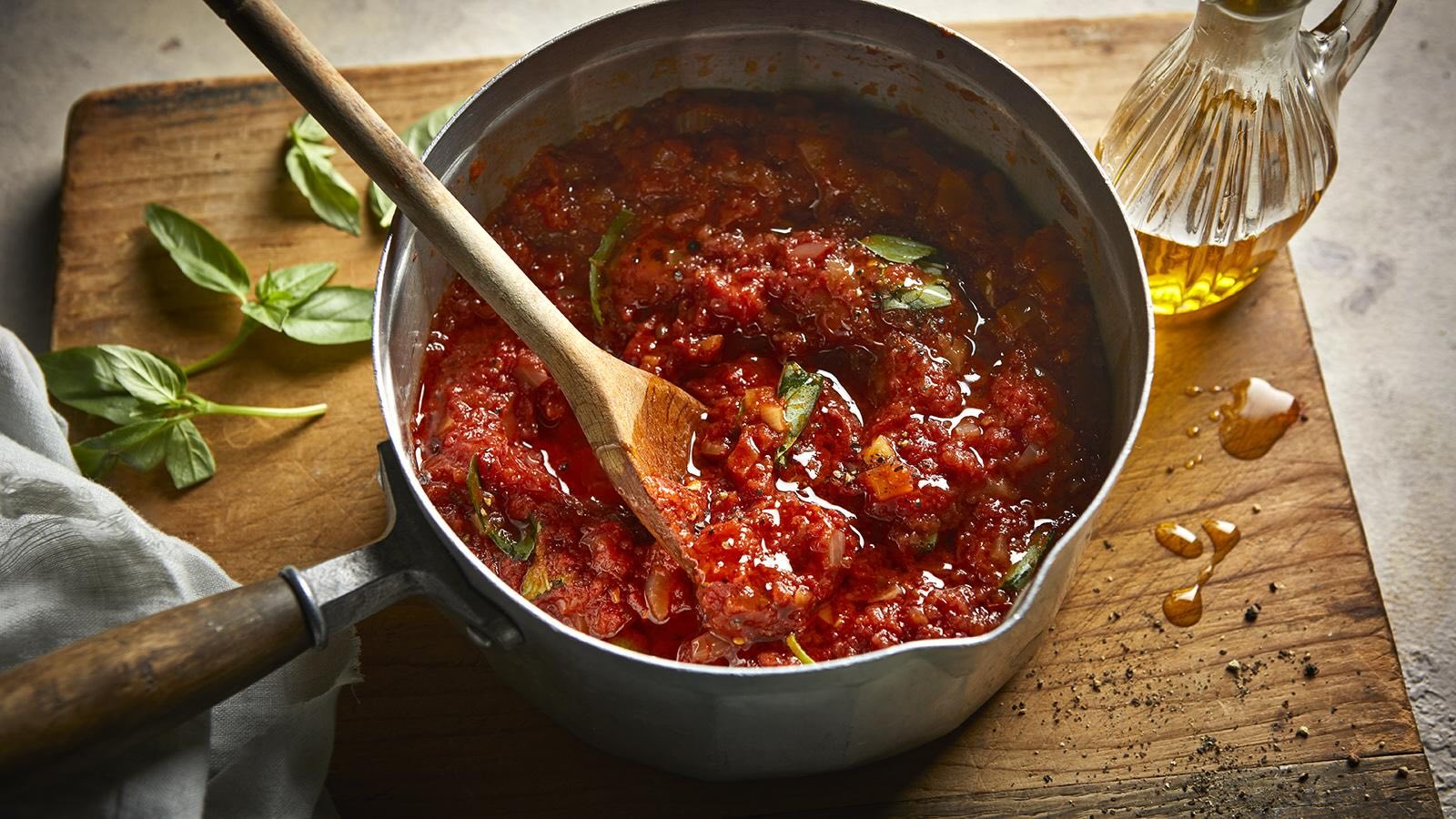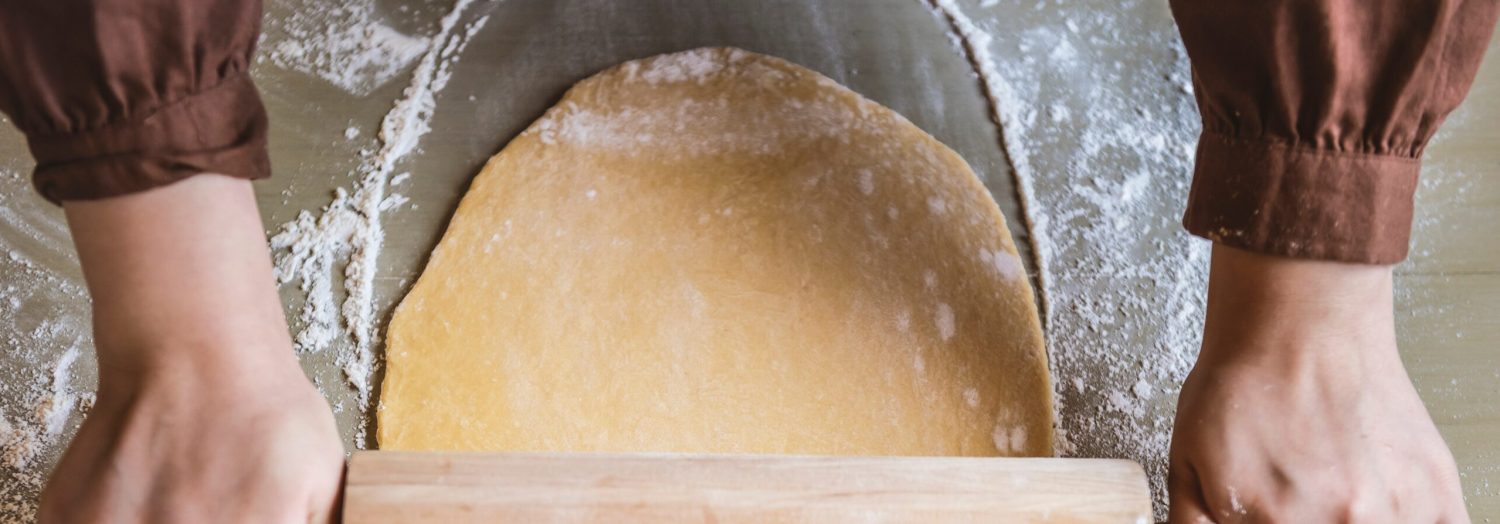This pasta sauce recipe is a classic and versatile addition to any kitchen. With its rich, savory flavors and simple ingredients, it can elevate any pasta dish to a new level. Perfect for a quick weeknight dinner or a special occasion, this sauce is sure to become a staple in your culinary repertoire.
Most of the ingredients in this recipe are common pantry staples, but you might need to pick up a few items if you don't have them on hand. Olive oil is essential for sautéing the onion and garlic, giving the sauce a rich base. Canned tomatoes are the heart of the sauce, providing a robust tomato flavor. Dried oregano and basil add depth and an aromatic touch to the sauce.

Ingredients For Pasta Sauce Recipe
Olive oil: A healthy fat used for sautéing and adding richness to the sauce.
Onion: Adds sweetness and depth of flavor when cooked until translucent.
Garlic: Provides a pungent, aromatic base that enhances the overall taste.
Canned tomatoes: The main ingredient, offering a rich and tangy tomato flavor.
Oregano: A dried herb that adds a slightly bitter, aromatic note.
Basil: Another dried herb that brings a sweet, peppery flavor to the sauce.
Salt: Enhances all the flavors in the sauce.
Pepper: Adds a hint of heat and complexity.
Technique Tip for This Recipe
When sautéing the onion, ensure it becomes fully translucent before adding the garlic. This allows the onion to release its natural sweetness, creating a richer base for your pasta sauce.
Suggested Side Dishes
Alternative Ingredients
olive oil - Substitute with avocado oil: Avocado oil has a similar healthy fat profile and a high smoke point, making it a great alternative for sautéing.
onion - Substitute with shallots: Shallots offer a milder, sweeter flavor that can enhance the complexity of the sauce.
garlic - Substitute with garlic powder: Garlic powder can be used if fresh garlic is unavailable, though it has a slightly different flavor profile.
canned tomatoes - Substitute with fresh tomatoes: Fresh tomatoes can be used if you prefer a fresher taste, though you may need to cook them longer to achieve the same consistency.
dried oregano - Substitute with fresh oregano: Fresh oregano provides a more vibrant and aromatic flavor, though you may need to use a larger quantity.
dried basil - Substitute with fresh basil: Fresh basil offers a more intense and aromatic flavor, enhancing the overall taste of the sauce.
salt - Substitute with soy sauce: Soy sauce can add a different depth of umami flavor while still providing the necessary saltiness.
pepper - Substitute with white pepper: White pepper has a milder flavor and can be used if you prefer a less pungent taste.
Other Alternative Recipes
How to Store or Freeze This Recipe
Allow the pasta sauce to cool completely before storing. This helps maintain its flavor and texture.
Transfer the sauce into airtight containers or mason jars. Make sure to leave some space at the top, as the sauce will expand when frozen.
Label each container with the date and contents. This ensures you know how long the sauce has been stored and helps you keep track of your meal prep.
For short-term storage, place the containers in the refrigerator. The sauce will stay fresh for up to 5-7 days.
For long-term storage, place the containers in the freezer. The sauce can be frozen for up to 3 months without losing its flavor.
When ready to use, thaw the sauce in the refrigerator overnight. If you're in a hurry, you can also use the defrost setting on your microwave.
Reheat the sauce on the stovetop over medium heat, stirring occasionally. Add a splash of vegetable broth or water if the sauce has thickened too much during storage.
For an extra burst of flavor, consider adding fresh herbs like basil or parsley just before serving. This will give your sauce a fresh, vibrant taste.
If you have leftover sauce after reheating, you can store it in the refrigerator for another 3-4 days. Just make sure to keep it in an airtight container.
How to Reheat Leftovers
Stovetop Method:
- Pour the leftover pasta sauce into a saucepan.
- Heat over medium-low heat, stirring occasionally to prevent sticking.
- Once the sauce starts to bubble, reduce the heat to low and let it simmer for about 5-10 minutes until thoroughly heated.
- Taste and adjust the seasoning if necessary before serving over your favorite pasta.
Microwave Method:
- Transfer the pasta sauce to a microwave-safe container.
- Cover the container with a microwave-safe lid or a microwave-safe plate to prevent splatters.
- Heat on high for 1-2 minutes, then stir the sauce.
- Continue heating in 30-second intervals, stirring in between, until the sauce is hot throughout.
- Let it sit for a minute before serving to allow the heat to distribute evenly.
Oven Method:
- Preheat your oven to 350°F (175°C).
- Place the pasta sauce in an oven-safe dish and cover it with aluminum foil.
- Bake for about 20-25 minutes, stirring halfway through to ensure even heating.
- Once heated, remove from the oven and give it a good stir before serving.
Slow Cooker Method:
- Pour the leftover pasta sauce into the slow cooker.
- Set the slow cooker to low heat.
- Cover and let it heat for about 1-2 hours, stirring occasionally.
- Once the sauce is hot, adjust the seasoning if needed and serve.
Double Boiler Method:
- Fill the bottom pot of a double boiler with water and bring it to a simmer.
- Place the pasta sauce in the top pot of the double boiler.
- Stir occasionally, allowing the steam to gently heat the sauce.
- Heat until the sauce is warmed through, which should take about 15-20 minutes.
Best Tools for This Recipe
Saucepan: A medium-sized saucepan is essential for cooking the sauce evenly and allowing it to simmer properly.
Wooden spoon: A wooden spoon is perfect for stirring the sauce and ensuring all ingredients are well combined without scratching the pan.
Chef's knife: A sharp chef's knife is crucial for chopping the onion and mincing the garlic efficiently.
Cutting board: A sturdy cutting board provides a safe and stable surface for chopping the onion and mincing the garlic.
Can opener: A can opener is necessary to open the canned tomatoes easily.
Measuring spoons: Measuring spoons are used to accurately measure the olive oil, dried oregano, and dried basil.
Mixing bowl: A mixing bowl can be useful for holding the chopped onion and minced garlic before adding them to the saucepan.
Ladle: A ladle is helpful for serving the sauce over the pasta once it’s ready.
How to Save Time on This Recipe
Use pre-chopped onions: Save time by buying pre-chopped onions from the store.
Minced garlic in a jar: Opt for jarred minced garlic to skip peeling and chopping.
Crushed tomatoes: Use canned crushed tomatoes instead of whole to reduce cooking time.
Batch cooking: Make a large batch of sauce and freeze portions for future meals.
Quick simmer: Simmer the sauce with the lid on to speed up the cooking process.
Pre-measure spices: Measure out your dried oregano and basil before starting to cook.

Pasta Sauce Recipe
Ingredients
Main Ingredients
- 2 tablespoon Olive Oil
- 1 medium Onion, chopped
- 3 cloves Garlic, minced
- 800 g Canned Tomatoes
- 1 teaspoon Dried Oregano
- 1 teaspoon Dried Basil
- to taste Salt and Pepper
Instructions
- Heat the olive oil in a saucepan over medium heat.
- Add the chopped onion and cook until translucent, about 5 minutes.
- Add the minced garlic and cook for another minute.
- Add the canned tomatoes, dried oregano, and dried basil. Stir to combine.
- Bring the sauce to a simmer and cook for 15-20 minutes, stirring occasionally.
- Season with salt and pepper to taste. Serve over your favorite pasta.
Nutritional Value
Keywords
Suggested Appetizers and Desserts
More Amazing Recipes to Try 🙂
- Dirty Martini Recipe5 Minutes
- Summer Squash Casserole Recipe45 Minutes
- Italian Pizza Dough Recipe25 Minutes
- Fresh Banana Daiquiri Recipe5 Minutes
- Mississippi Slugburger Recipe25 Minutes
- Tom Collins Cocktail Recipe5 Minutes
- Crab Salad Recipe15 Minutes
- Pickled Beets Recipe45 Minutes


Leave a Reply